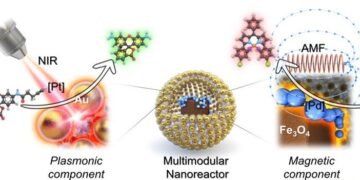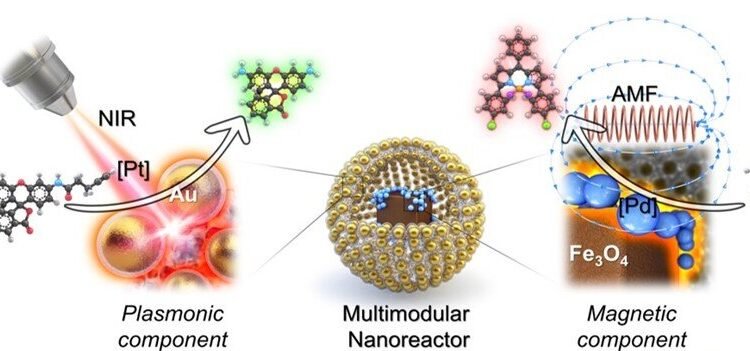Various chemical reactions take place in cells and life is maintained because each reaction process is coordinated without error. Recently, a group of Korean researchers developed a mechanism, enable accurate control of catalytic reactions, that allows humans to control catalytic reactions directly like cells.
A POSTECH research team led by Professor In Su Lee, Research Assistant Professors Amit Kumar and Nitee Kumari, and Master’s student Jongwon Lim (Department of Chemistry) has developed a nanoreactor that combines magnetic materials with metal-based materials. A nanoreactor combines two or more materials that cause a continuous catalytic reaction to help create a specific chemical.
However, each step in the synthesis affects the other because of the high temperature and pressure, which makes it difficult to control the reaction process or prevent side reactions. To overcome this, the research team developed a (enable accurate control of catalytic reactions) magnetic-plasmonic multimodular nanoreactor with a magnetic core-shell and a purple plasmon shell.
The magnetic field between the nanoreactor and the shell of the plasmons and the external selective causes the catalyst under the influence of magnetic and near infrared rays, respectively. As a result, the platform can choose to generate heat without applying heat to the outside. In addition, the nanoreactor does not harm living organisms or accelerate side reactions by reducing interference from different materials.

Due to the remote control of the nanoreactor using a magnetic field and near infrared rays, the platform produced cinnamaldehyde with added value (approx. 95%) from a continuous one-pot reaction from the same starting material.
“With this nanoreactor, it will be possible to create complex drugs that could not be created in the body until now,” explained Professor In Su Lee. “Also, the technology should be involved in the field of treatment, which diagnoses and treats diseases at the same time.”
The research has been published in Nano Letters.





































